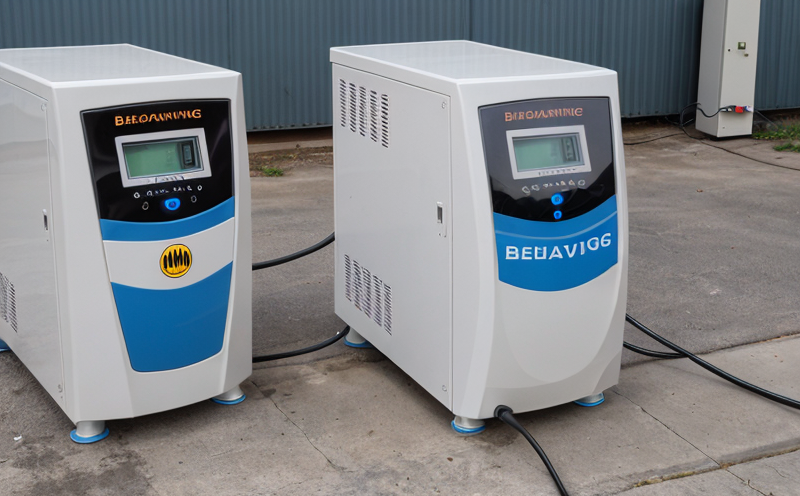IEC 62928 Charging and Discharging Behavior Testing of Railway Vehicle Batteries
The International Electrotechnical Commission (IEC) Publication IEC 62928 provides a comprehensive framework for the testing of charging and discharging behavior in railway vehicle batteries. This standard is essential for ensuring that battery systems meet stringent safety, performance, and reliability requirements under various operating conditions.
The test procedures outlined in this international standard are designed to evaluate the dynamic response characteristics of batteries during both charging and discharging phases. The tests help identify potential issues such as over-temperature, over-voltage, or over-current conditions that could lead to operational failures or safety hazards.
The testing process typically involves subjecting the battery cells to controlled charge and discharge cycles under specified environmental conditions (e.g., temperature ranges). These cycles are designed to simulate real-world usage scenarios, including extreme weather conditions which might occur during transportation. By simulating these situations accurately, manufacturers can ensure their products perform reliably across all expected operating environments.
One of the key aspects addressed by IEC 62928 is the evaluation of state-of-charge (SoC) and state-of-health (SoH). These parameters are critical indicators of a battery’s health and remaining useful life. The standard specifies precise methods for measuring SoC and SoH using various techniques such as coulometric analysis or impedance spectroscopy.
Another important feature is the assessment of thermal management capabilities, which ensures that batteries operate within safe temperature limits during charging and discharging processes. Excessive heat can degrade battery performance over time and potentially cause catastrophic failures if not properly managed.
The tests also include evaluation of electrical characteristics like internal resistance changes due to aging or abuse. An increase in internal resistance could indicate impending failure modes such as short circuits or open circuits within the cell structure.
For quality managers and compliance officers responsible for ensuring product safety and regulatory adherence, IEC 62928 offers a robust set of guidelines that go beyond basic performance testing. It emphasizes continuous monitoring throughout each cycle to detect any anomalies early on before they escalate into major problems.
In summary, adhering to the procedures specified in this standard enables manufacturers to produce high-quality railway vehicle batteries that are dependable and meet international safety standards. Proper implementation of these tests not only enhances product reliability but also contributes significantly towards reducing maintenance costs associated with premature failures or recalls.
Benefits
Adhering to IEC 62928 brings numerous advantages, both for manufacturers and end users. For manufacturers, it ensures consistent product quality and enhances brand reputation by demonstrating commitment to safety and reliability.
End users benefit from safer, more dependable products that last longer and require less frequent replacement or maintenance. This ultimately leads to cost savings over the lifecycle of the equipment.
The standard also facilitates easier compliance with regulatory requirements worldwide, simplifying market access for compliant products. Additionally, it fosters innovation by providing a clear roadmap for developing next-generation battery technologies that meet evolving industry needs.
Why Choose This Test
Selecting IEC 62928 charging and discharging behavior testing is crucial for several reasons. Firstly, it provides a standardized approach to evaluating battery performance under controlled conditions, which enhances data consistency across different laboratories.
The test protocols in this standard are well-suited for addressing specific challenges faced by railway vehicle manufacturers today. They account for the unique operational demands placed on batteries operating in harsh environments while ensuring they remain safe and efficient.
Choosing to follow these tests allows companies to gain insights into potential areas of improvement through detailed performance data generated during testing cycles. This information can be invaluable when making decisions about design changes or material selections aimed at optimizing battery lifespan and reducing weight without compromising on safety standards.
Customer Impact and Satisfaction
The impact of choosing IEC 62928 charging and discharging behavior testing extends beyond just the technical aspects; it directly influences customer satisfaction and loyalty. By adhering to this standard, manufacturers ensure that their products meet or exceed industry expectations for safety, performance, and longevity.
Customers benefit from reliable products that are less likely to fail unexpectedly during critical operations such as train services. This reduces downtime and operational disruptions, leading to improved service reliability and customer confidence in the brand.
Moreover, compliance with IEC 62928 helps companies avoid costly penalties associated with non-compliance or recalls due to safety concerns. It also opens doors to new markets where stringent regulatory requirements are enforced, thereby expanding business opportunities globally.





